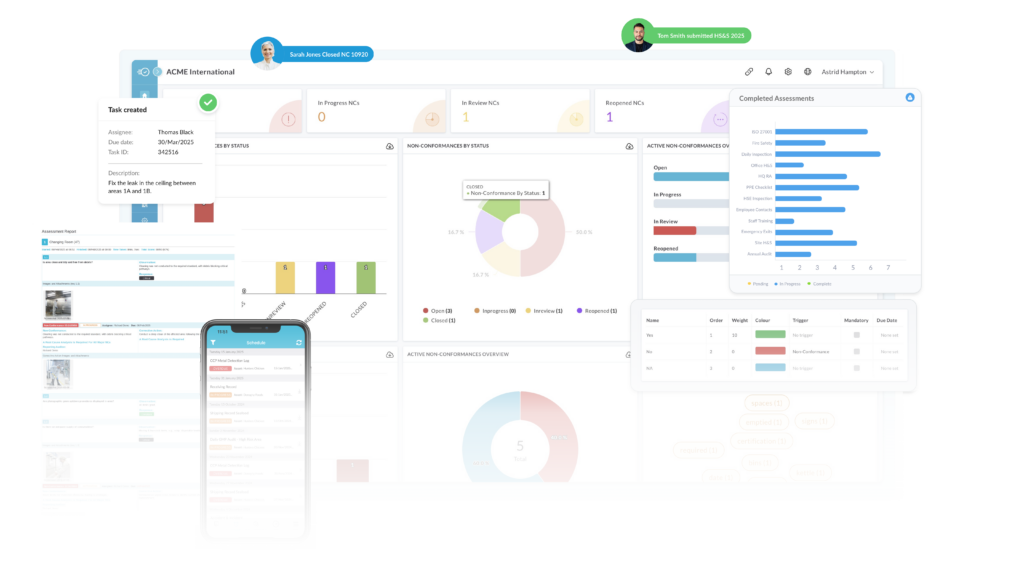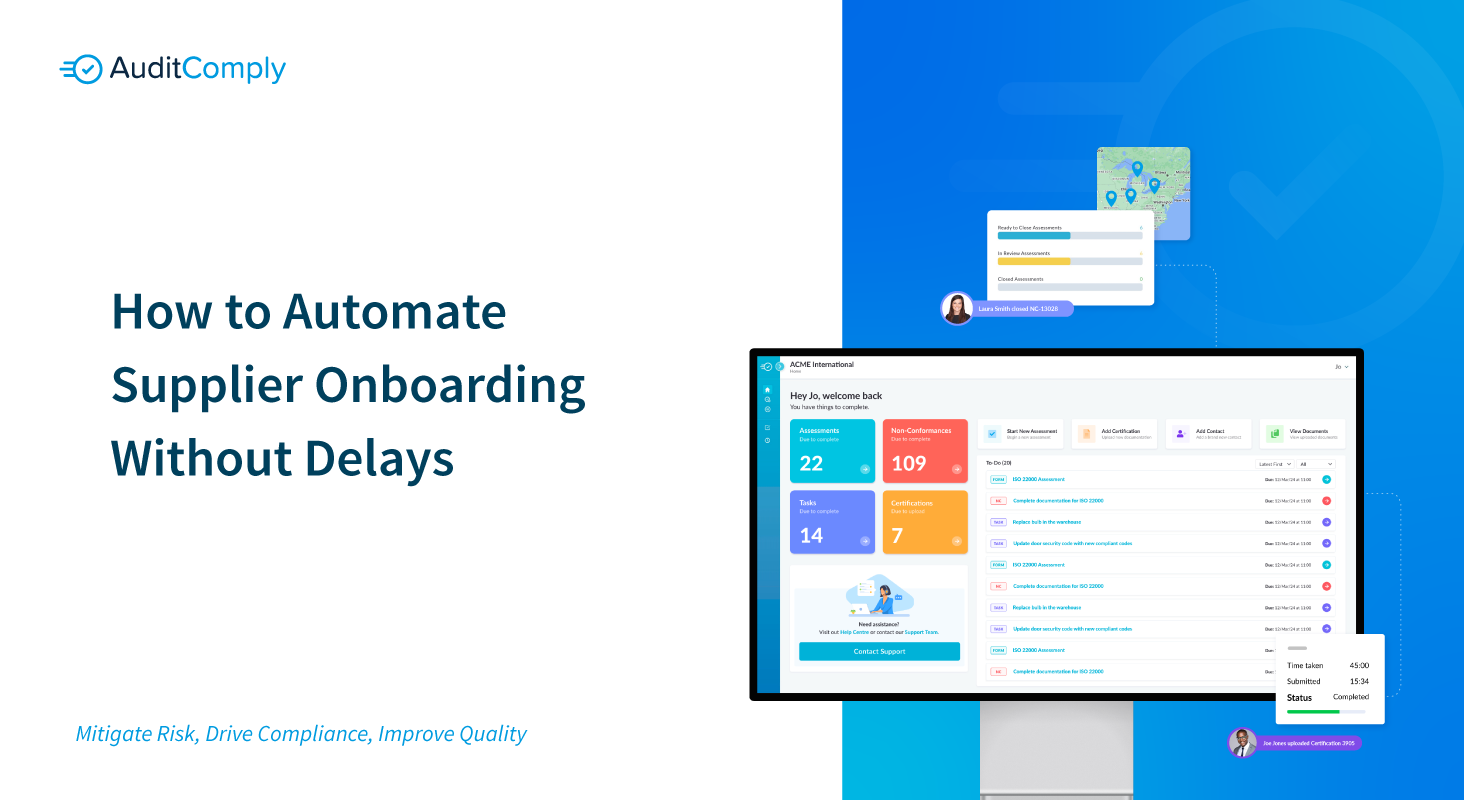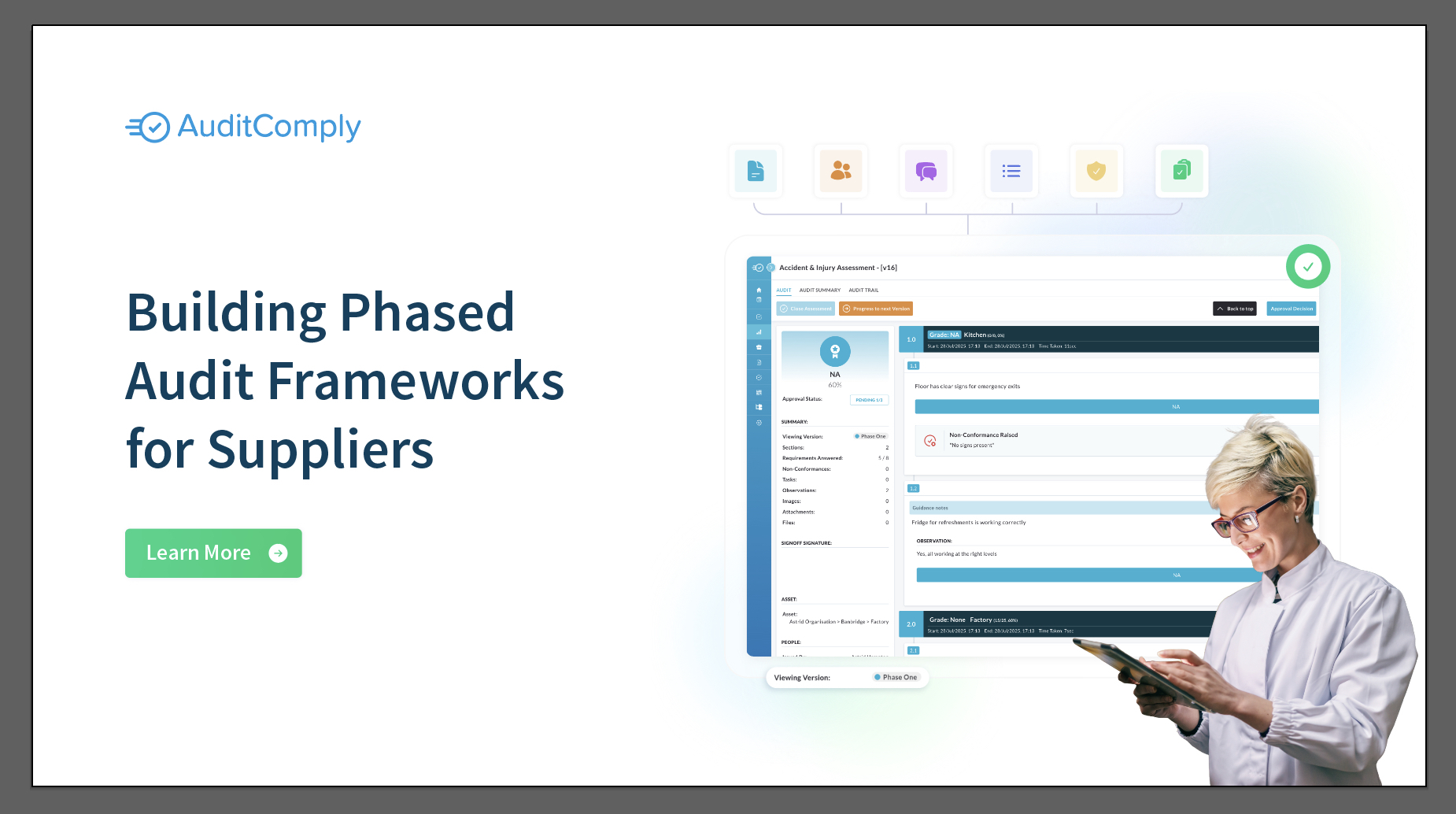The Hidden Cost of Manual Supplier Onboarding
Let’s be honest, onboarding a new supplier shouldn’t feel like detective work.
But for many manufacturers, it still does. Spreadsheets, PDF certificates, audit reports in email threads… and the constant back-and-forth to get what you need. Manual onboarding doesn’t just waste time, it delays production, exposes your organization to supplier risk, and makes compliance documentation a game of chance.
And as supply chains become more complex and quality expectations continue to rise, those delays are no longer acceptable.
That’s why leading manufacturing and quality teams are turning to automation. Not just to move faster, but to build scalable, risk-resilient supplier ecosystems that drive real performance, from day one.

1. Smart, Structured Self-Assessmenta
Every supplier relationship starts with a question: can we trust them?
Self-assessments are your first line of defense in understanding a supplier’s readiness, compliance posture, and risk exposure. But sending out a static questionnaire is only half the job. What matters is how you manage the response.
AuditComply lets you deploy self-assessments that are dynamic and data-rich. Suppliers complete forms online, uploading documentation like ISO 9001 or BRCGS certifications, insurance policies, and ESG disclosures. Based on their answers, suppliers are automatically scored across key risk areas, from food safety to ethical sourcing, with workflows triggered for high-risk responses.
Food manufacturers use this approach to reduce average onboarding time by 60%, while automatically identifying at-risk vendors without any manual scoring.
By feeding this data into your supplier repository, every supplier becomes part of a structured repository, organized by region, category, risk level, or custom attributes, enabling smarter decisions downstream.

2. Automate Compliance Documentation Collection & Expiry Management
For most teams, managing compliance documentation still involves email attachments, shared drives, and crossed fingers before audits.
With automation, you can flip that model. Suppliers upload required documents, from HACCP plans to third-party certifications, into a central portal. Every file is tagged, tracked, and monitored for expiry. You set the rules (e.g. “no supplier approved without valid GFSI certification”) and the system does the rest, prompting suppliers when updates are due, and notifying your team when something’s missing.
Using AuditComply, customers can embed expiry tracking into its onboarding workflows. Now, if a food safety certificate is 30 days from expiration, the platform sends automatic reminders to both the supplier and the internal compliance lead, eliminating last-minute surprises before audits.
And with each piece of documentation linked back to the supplier’s profile, nothing gets lost, and everything is where it should be.
3. Bring Supplier Audits and Risk into One View
Audit reports shouldn’t live in PDFs that no one opens. They should live in dashboards everyone uses.
AuditComply lets you centralize third-party or internal audit reports, like BRC, SQF, or AS9100, and tie them directly to supplier risk scoring. Findings are captured, non-conformances trigger corrective actions, and performance trends over time are visualized in real time using Power BI.
This gives quality and compliance teams a complete picture, not just of one audit, but of long-term supplier performance.
For example, a tier-1 automotive supplier can integrate all third-party audit data into AuditComply. High-risk findings automatically trigger CAPA tasks. Internal dashboards, powered by Power BI, track supplier performance across metrics like audit scores, compliance rates, and overdue corrective actions, creating a proactive, not reactive, approach to quality management.
4. Automate Workflows Across Risk, Compliance & Performance
Supplier onboarding isn’t just about documentation. It’s about how you move suppliers from unknown to approved without bottlenecks.
With AuditComply, you can build conditional workflows that match your internal processes. For example:
- High-risk suppliers trigger escalation to regional QA
- Missing documents generate auto-reminders to the supplier
- Approved suppliers flow into your ERP or procurement platform
Better still, because AuditComply integrates with Power BI, you can monitor onboarding velocity, common bottlenecks, and supplier performance over time. Customers can use this insight to reduce onboarding time by two weeks, simply by identifying where handoffs are breaking down.
No more guesswork. Just better decisions, faster.
Turning Supplier Onboarding into a Competitive Advantage
When you automate supplier onboarding, you’re not just saving time, you’re building resilience. You’re reducing the risk of non-compliance. You’re ensuring manufacturing quality before production ever begins. And you’re transforming fragmented supplier data into a single source of truth.
With AuditComply’s Supplier Management Platform, onboarding becomes an extension of your quality strategy.
- Supplier self-assessments are structured, scored, and workflow-enabled
- Compliance documentation is tracked and automatically chased
- Risk and performance insights are visualized in Power BI
- Your portal becomes a living system of supplier intelligence
In a world where supply chain disruptions, audits, and quality failures can cost millions, automation isn’t just helpful. It’s essential.
👉 Book a demo today to see how AuditComply can help you onboard faster, reduce supplier risk, and take control of compliance documentation, with zero delays.



